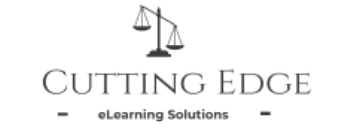What Are the Best Practices for Managing Online Course Enrollment and Access?
When managing online course enrollment and access, optimize the process by streamlining registrations and using automated systems. Secure user authentication and provide clear instructions for a hassle-free experience. Utilize access control measures, authentication, and user role restrictions for safeguarding materials. Follow strict guidelines for student registration, deadlines, and authentication protocols. Share instructor materials securely, respecting copyrights and using encryption. Benefit from automated enrollment systems for tracking registrations and informed decision-making. Implement stringent data security with encryption, multi-factor authentication, and access monitoring. Utilize clear communication channels like email updates and social media to reach a broader audience efficiently. Access more insights by exploring these best practices further.
Key Takeaways
- Implement automated enrollment systems for efficiency.
- Utilize user authentication to safeguard course materials.
- Offer clear enrollment instructions and deadlines.
- Employ secure file sharing practices for instructors.
- Enhance data security with encryption and monitoring.
Enrollment Process Optimization
To optimize the enrollment process for online courses, streamline the registration steps and ensure clear instructions for students to follow.
Enrollment automation can greatly enhance the efficiency of the process. By implementing automated systems, students can easily enroll in courses without manual intervention, saving time and reducing errors.
User authentication is another important aspect to take into account. Ensuring that students are properly authenticated before enrolling in courses helps maintain security and prevents unauthorized access. Implementing a secure user authentication process, such as two-factor authentication or biometric verification, adds an extra layer of protection to the enrollment system.
Clear and concise instructions should be provided to guide students through the enrollment process step by step. This includes information on how to create an account, select courses, and complete payment, ensuring a smooth and hassle-free experience for students.
Access Control Measures
Implement access control measures to safeguard online course materials and guarantee only authorized individuals can access the content. User authentication is a fundamental aspect of access control. Require users to verify their identity through secure methods like passwords, two-factor authentication, or biometric recognition before allowing entry to the course materials. This guarantees that only legitimate users can access the content, reducing the risk of unauthorized individuals viewing or modifying sensitive information.
Access restrictions are equally important in maintaining the security and integrity of online course materials. Implement access restrictions based on user roles or permissions to control who can view, edit, or share specific content. By assigning different levels of access to different user groups, you can prevent unauthorized users from tampering with course materials or accessing confidential data. Regularly review and update access permissions to align with the current course structure and user requirements. These measures enhance the overall security of online courses and protect sensitive educational content from unauthorized access.
Student Registration Guidelines
When establishing student registration guidelines, make certain to provide clear enrollment instructions. This guarantees that students know exactly how to sign up for courses.
Additionally, implement access control measures to safeguard course materials and ensure only registered students have access.
Clear Enrollment Instructions
Provide students with step-by-step guidance for enrolling in courses to streamline the registration process efficiently. Make sure to clearly communicate enrollment deadlines to avoid any confusion. Include information on how students can receive registration support if needed, such as contact details for assistance.
Prioritize user authentication measures to guarantee secure enrollment processes. Once enrolled, promptly send an enrollment confirmation to students to acknowledge their successful registration. Clearly outline the steps they need to take to access the course materials and any additional resources.
Access Control Measures
To guarantee secure student enrollment and access, establish stringent access control measures within the registration guidelines. User authentication is a critical component in ensuring that only authorized individuals can enroll in online courses.
Implementing multi-factor authentication, such as requiring a username and password along with a verification code sent to a registered email or phone number, enhances security. Additionally, access restrictions should be put in place to limit the areas of the course that students can navigate based on their enrollment status.
For example, restricting access to certain modules until prerequisites are completed helps maintain the integrity of the course structure. By incorporating these measures, you can enhance the security and efficiency of online course enrollment for both students and instructors.
Instructor Course Material Sharing
When sharing course materials as an instructor, employ secure file sharing practices to protect sensitive information. Utilize permission control settings to manage who can access and edit the materials, maintaining confidentiality and integrity.
Adhere to copyright compliance guidelines to respect intellectual property rights and promote ethical sharing practices.
Secure File Sharing
Ensuring secure file sharing for instructor course materials is essential for maintaining the confidentiality and integrity of educational resources. When sharing important files, utilizing encryption protocols and implementing robust user authentication measures are vital to safeguard sensitive data from unauthorized access. Encryption protocols help to encode the information, making it unreadable to anyone without the proper decryption key. User authentication adds an extra layer of security by verifying the identity of individuals accessing the files. By combining these methods, you can create a secure environment for sharing instructor course materials online.
| Encryption Protocols | User Authentication | Benefits |
|---|---|---|
| SSL/TLS | Password Protection | Secure Data Transmission |
| AES | Two-Factor Authentication | Enhanced Security |
| RSA | Biometric Verification | Reliable User Identification |
Permission Control Settings
For a secure sharing environment of instructor course materials online, implementing precise permission control settings is essential. User authentication is vital to verify the identity of individuals accessing the materials, ensuring that only authorized users can view or download sensitive content.
Enrollment tracking allows instructors to monitor who has access to specific course materials, enabling them to manage permissions effectively. By setting up detailed permission control settings, instructors can limit access to certain files or modules based on individual student needs or course requirements.
This level of control not only enhances security but also streamlines the distribution of materials, creating a more efficient and organized online learning experience for both instructors and students.
Copyright Compliance Guidelines
In order to guarantee legal compliance and proper attribution of intellectual property, instructors must adhere to strict copyright guidelines when sharing course materials with students online.
When sharing instructor-created content, it's important to take into account fair use policies to determine the acceptable use of copyrighted material.
Be mindful of digital rights management to make certain that access to digital materials is controlled and monitored.
Providing proper citations and references for external resources used in course materials is essential to respect copyright holders' rights.
By following these guidelines, you contribute to a culture of respect for intellectual property and protect yourself from potential legal issues related to copyright infringement.
Automated Enrollment Systems
To streamline the enrollment process efficiently, consider integrating automated systems into your online course registration platform.
Automated enrollment systems offer various benefits, such as enrollment tracking and student authentication.
Enrollment tracking allows you to monitor the number of students registering for your course in real-time, helping you make informed decisions about class sizes and resources.
Additionally, automated systems can streamline the student authentication process by verifying student identities securely and quickly, ensuring that only authorized individuals have access to course materials.
Data Security Protocols
Consider implementing stringent data security protocols to safeguard sensitive information and guarantee the integrity of your online course enrollment system. Utilizing robust data encryption standards is vital in protecting user data from unauthorized access.
Implementing user authentication protocols such as multi-factor authentication adds an extra layer of security, ensuring that only authorized users can access the system.
Secure login procedures are essential to prevent unauthorized individuals from gaining access to sensitive data. It's advisable to require strong passwords, regular password updates, and limit the number of login attempts to deter potential security breaches.
Additionally, employing access monitoring techniques allows you to track user activities within the system, enabling you to identify any suspicious behavior promptly.
Communication Channels for Updates
Utilize various communication channels to guarantee timely updates reach all stakeholders involved in the online course enrollment process. Keeping everyone informed is vital for a smooth enrollment experience. Here are three effective methods to ensure communication is efficient and up to date:
- Email Notifications: Send regular email updates to students, instructors, and administrators regarding enrollment deadlines, course availability, and any changes in the enrollment process. Make sure these emails are clear, concise, and easy to understand.
- Social Media Updates: Use social media platforms such as Twitter, Facebook, or LinkedIn to share important updates about online course enrollment. Social media is a great way to reach a broader audience quickly and efficiently.
- Online Platform Announcements: Utilize the online course platform to post announcements and updates prominently. This ensures that anyone logged into the platform can easily access the latest information regarding enrollment processes and deadlines.
Conclusion
To summarize, by implementing best practices for managing online course enrollment and access, you can guarantee a smooth and efficient process for both students and instructors.
While some may argue that these measures may be time-consuming or complicated, the benefits far outweigh any potential challenges.
By prioritizing enrollment process optimization, access control measures, and communication channels, you can create a streamlined and secure online learning environment that enhances the overall educational experience.







